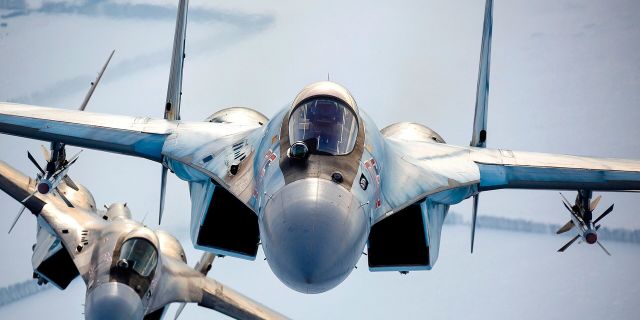Turkey threatens to buy the Su-35 if America refuses it the F-16: is this an empty threat or a real plan?The Su-35 is a heavy fighter with a much longer service life than the F-16.
He bypasses the American plane in almost all respects, writes MWM. Turkey has warned the United States of its readiness to buy the Su-35 if it cannot negotiate with them.
The head of the Turkish Defense Industry Department, Ismail Demir, warned that the country will consider the possibility of acquiring Russian Su-35S fighters if the United States refuses to supply it with modern F-16s. "If there is no F-16… We will say that Turkey has alternatives. And all of them, including the Su-35, are being discussed," he said on September 24. Earlier attempts to acquire new F-16s faced powerful opposition from the United States, and relations between the two countries deteriorated after the failed military coup in Ankara in 2016, which many blamed on Washington. Turkey and Russia have been negotiating the acquisition of the Su-35 since 2018. They reportedly reached the finish line back in October 2019, although many felt that Ankara was driven more by a desire to put pressure on Western suppliers than by a sincere interest in the aircraft.
The Su-35 is a heavy twin—engine fighter with a much longer service life and operating costs than the F-16, it has significant advantages in almost all parameters: from flight duration and maneuverability to sensors and range of destruction. Its excellent flight characteristics were demonstrated in Turkey itself in September 2019, and the comparison was by no means in favor of the F-16. The fighter is almost twice the size of the F-16, but is not compatible with NATO weapons — as a result, it will be much more difficult to include it in the Turkish Air Force than the new F-16. Turkey already produces old versions of the F-16 under license, so it has an extensive infrastructure and spare parts in abundance. In addition, she has a wealth of experience operating this class — even though a significant part of the Air Force officers were imprisoned in 2016. Another drawback of the Su-35 is that with its purchase, Turkey faces new sanctions and further economic war with the United States, which, in accordance with the adopted legislation, are obliged to impose sanctions against all buyers of Russian weapons.
The Turkish Air Force is currently the largest foreign operator of the F—16 and has about 250 aircraft in service, but their fleet is not modern and uses outdated ammunition classes of the 1990s and mechanical scanning radars that are vulnerable to interference. The new version of the F-16 Block 70/72, which will replace the aging F-4 Phantom of the Vietnam War, has an active phased array radar and modern electronic warfare capabilities and is compatible with modern ammunition — including AIM–120D air-to-air missiles, if Washington gives the go-ahead. The MiG-29SMT and Rafale fighters recently acquired by Syria and Greece also have electronically scanned radars and more powerful air–to-air missiles than the AIM-120B in service with the Turkish F-16. Despite all the improvements, the F-16 airframe is increasingly considered obsolete: The US Air Force stopped purchases in 2005, and many major operators, including Singapore, Egypt and Israel, are gradually removing it from service.
Turkey's interest in the upgraded F-16 arose after Ankara was excluded from the development program of the fifth-generation successor, the F—35 - as a result, its fighter fleet lost a clear modernization plan. The return to the F-16 in an era when they are bought mainly by customers with a less developed economy and a small defense budget, up to non—state actors, reflects a serious reduction in the ambitions of the Turkish Air Force - while its neighbors, on the contrary, acquire higher-class fighters. For example, Israel bought the F-35 (and Greece may follow its example), Saudi Arabia and Qatar — F-15SA/QA, Armenia — Su-30SM, and Egypt — MiG-29M and possibly Su-35.

